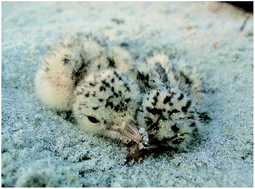Exposure to mercury and Aroclor 1268 congeners in least terns (Sternula antillarum) in coastal Georgia, USA
Abstract
Concentrations of total mercury and the rare PCB mixture Aroclor 1268 in least terns (Sternula antillarum), a colonially-nesting, piscivorous seabird, in the Turtle River estuary and other coastal sites in Georgia, USA, were investigated. The Turtle River estuary is the location of the Linden Chemical Plant (LCP) Superfund site, a site prioritized by USA law for immediate remediation, where industries released effluent containing these contaminants until 1994. Aroclor 1268 is a highly-chlorinated PCB mixture that was used and released exclusively at the LCP site and nowhere else in the south eastern USA. High concentrations of Aroclor 1268 congeners and mercury have been documented in biota local to LCP, but no studies report concentrations in high trophic level, piscivorous birds such as least terns. We collected feathers and feces from chicks, and eggs from adults, at nesting colonies along the Georgia coast to analyze contaminant loads (in dry weight ppb). Mean Aroclor 1268 mixture concentrations in eggs (≤16 329 ppb) were highest at colonies in and just outside LCP, and decreased with increasing distance (up to 110 km) from LCP, but the Aroclor 1268 signature congener mixture was present at all sites. Mercury concentrations in eggs (≤3370 ppb), feathers (≤5950 ppb), and feces (≤417 ppb), were present at all sites, but did not vary significantly among sites. This report confirms the extensive dispersal of Aroclor 1268 congeners (approximately 110 km north and 70 km south of its point source) via bioaccumulation and trophic transfer.


 Please wait while we load your content...
Please wait while we load your content...